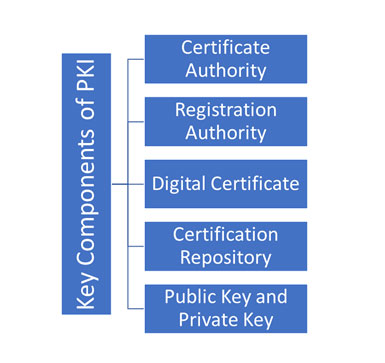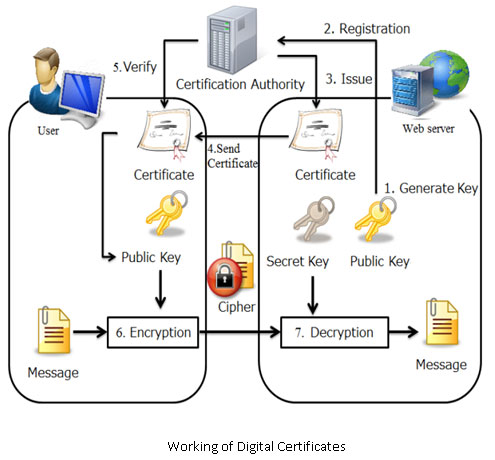Corporates globally are faced with challenges in securing transactions across networks. In this article, I’ll focus on how PKI is serving Cybersecurity on ensuring the IT security.
What is PKI?
Public Key Infrastructure (PKI) is a set of Procedures, Roles, Policies, Hardware, Software needed to create, manage, distribute, store, and revoke Digital Certificates and manage public Key Encryption. PKI is used to validate the Identity of users, devices and services connected to the private Infrastructures.
What is Cybersecurity 2.0?
Cybersecurity 2.0 is a comprehensive solution for protecting the entire corporate IT network from the internal and external threats. Cybersecurity 2.0 is equipped with 3 add on features of Promptness, Complication and Proactiveness.
- Promptness – is to react to external threats and vulnerabilities in a short time
- Proactiveness – is to identify the threats approaching the network in advance by monitoring the IT infrastructure at regular intervals for protection
- Complications – which will increase the strength of firewalls making it difficult for the external hackers to break the network and steal the data
Key Components of PKI

Certificate Authority
Certificate Authority is the basement of trust in PKI. Certificate Authority (CA) is a trusted third party that authenticates the identities of servers, individuals, and other entities. Certificate Authority confirms the identity of the entity by issuing a digital certificate that binds the identity with the public key of that entity.
X.509 certificate standard is the format in which the certificate is created by CA
Roles of Certificate Authority
• Issues certificates to requesting entities
• Manages and issue Certificate Revocation Lists (CRLs)
• Publish its certificates and CRLs
• Maintain status information of certificate expiration dates
Registration Authority
Registration Authority verifies the requests for Digital certificates (DC) by validating the identity of the entity. Every Registration Authority is certified by its corresponding CA.
Certificate Repositories
The key role of Certificate Repositories is to store the Digital Certificates. Distributed Certificates are stored in repository so that the applications could access them easily. DCs are stored in the directory system for best processing. Certificate repository keeps the status of the DCs update and in a hierarchical structure to make the search easier.
Certificate Repositories holds the below Certificate informations
- Status information
- Revocation information
Digital Certificate
A Digital Certificate is an electronic document which provides information to prove the identity of an entity. It contains the identity of an entity to its public key. Connections between the two communicating machines are secured by PKI through Digital certificate where the identity of the two parties could be verified.
Digital Certificate Structure
Every PKI Digital Certification has a structure. DCs widely use X509 Certificate Standard, which has 3 versions and 10 fields out of which is 6 fields are mandatory and rest are optional. Listed below are the fields of DCs.

Types of Certificates
- Personal
- Organizational
- Server
- Developer
- Government
Public Key – Distributed widely, but still associated with its owner
Private Key – Known only to its owner
How does PKI work?
Below representation explains the process of Digital certificate working with steps of Generation, Registration, Issuing, Sending Certificate, Verification, Encryption and Decryption of the message from Source to Destination.

Benefits of PKI for Cybersecurity
- PKI enables Authentication to server on the very first time without having registered with the system, provided the user has the Digital Certificate from recognized and trusted CA.
- Reduces and filters risks and external threats by authenticating the identity of the users.
- PKI ensures the privacy of communication is maintained end-to-end from the source to destinations during the transactions.
- PKI could be implemented in a such a way to enable Single Sign On (SSO).
- Digitals Certificate supports a number of enterprise corporate networks and applications.
- PKI implementation can provide encryption of network traffic as well as integrity checking.
- PKI is standards-based technology.
- It is highly scalable.
Since majority of transaction are online today, PKI is a must-have for Cybersecurity which ensures network security in today’s world.
About the Author –

Sundaramoorthy S
Sundar has more than 13 years of experience in IT, IT security, IDAM, PAM and MDM project and products. He is interested in developing innovative mobile applications which saves time and money. He is also a travel enthusiast.
Back to blogs
